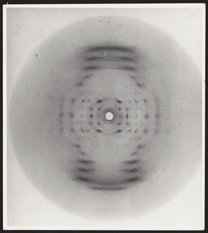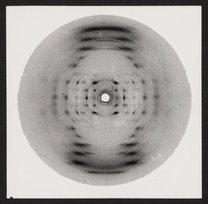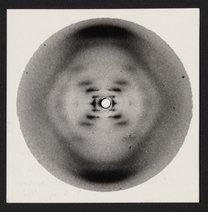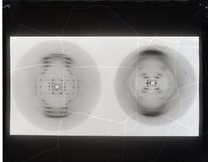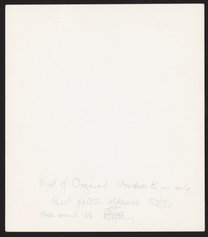DNA X-ray diffraction image known as Photo 51, Annotated by Raymond Gosling
Photo 51
- Circa 1953
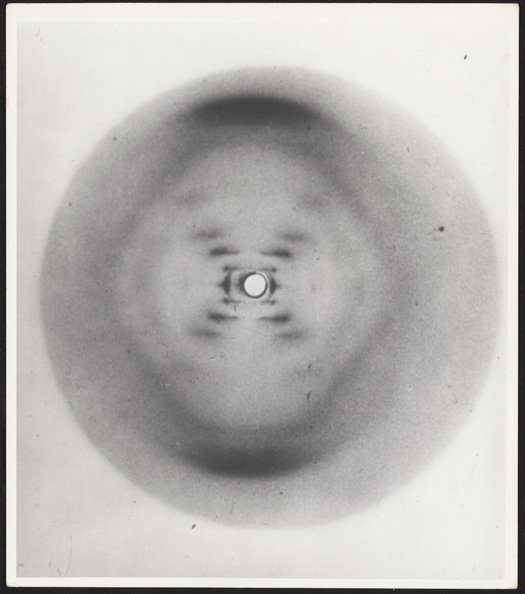
Rights
Download all 2 images
PDFZIPof full-sized JPGsDownload selected image
Small JPG1200 x 1357px — 159 KBLarge JPG2880 x 3258px — 912 KBFull-sized JPG4862 x 5500px — 2.4 MBOriginal fileTIFF — 4862 x 5500px — 30.2 MBPhotographic print of a DNA X-ray diffraction pattern image known as Photo 51 with annotations by Raymond Gosling (1926-2015). The original image was made by Rosalind Franklin (1920-1958) and her student, Gosling, at King’s College London in 1952 and it was published in their 1953 Nature article “Molecular Configuration in Sodium Thymonucleate” alongside the article in which James D. Watson (1928-2025) and Francis Crick (1916-2004) proposed the double-helix structure of DNA. The photo contains one annotation on the reverse and is signed by Gosling. A pencil inscription reads “Print of Original Structure B - only. Best pattern obtained 52/53. Made around '53 R.G. Gosling”
| Property | Value |
|---|---|
| Creator of work | |
| Place of creation | |
| Format | |
| Genre | |
| Language | |
| Inscription |
|
| Subject | |
| Rights | In Copyright |
| Credit line |
|
Institutional location
| Department | |
|---|---|
| Collection | |
| Series arrangement |
|
| Physical container |
|
View collection guide View in library catalog
Related Items
Cite as
Gosling, R. G. (Raymond George), and Rosalind Franklin. “DNA X-Ray Diffraction Image Known as Photo 51, Annotated by Raymond Gosling,” circa 1953. History of Molecular Biology Collection, Box 10, Folder 15. Science History Institute. Philadelphia. https://digital.sciencehistory.org/works/mjir8wn.
This citation is automatically generated and may contain errors.

